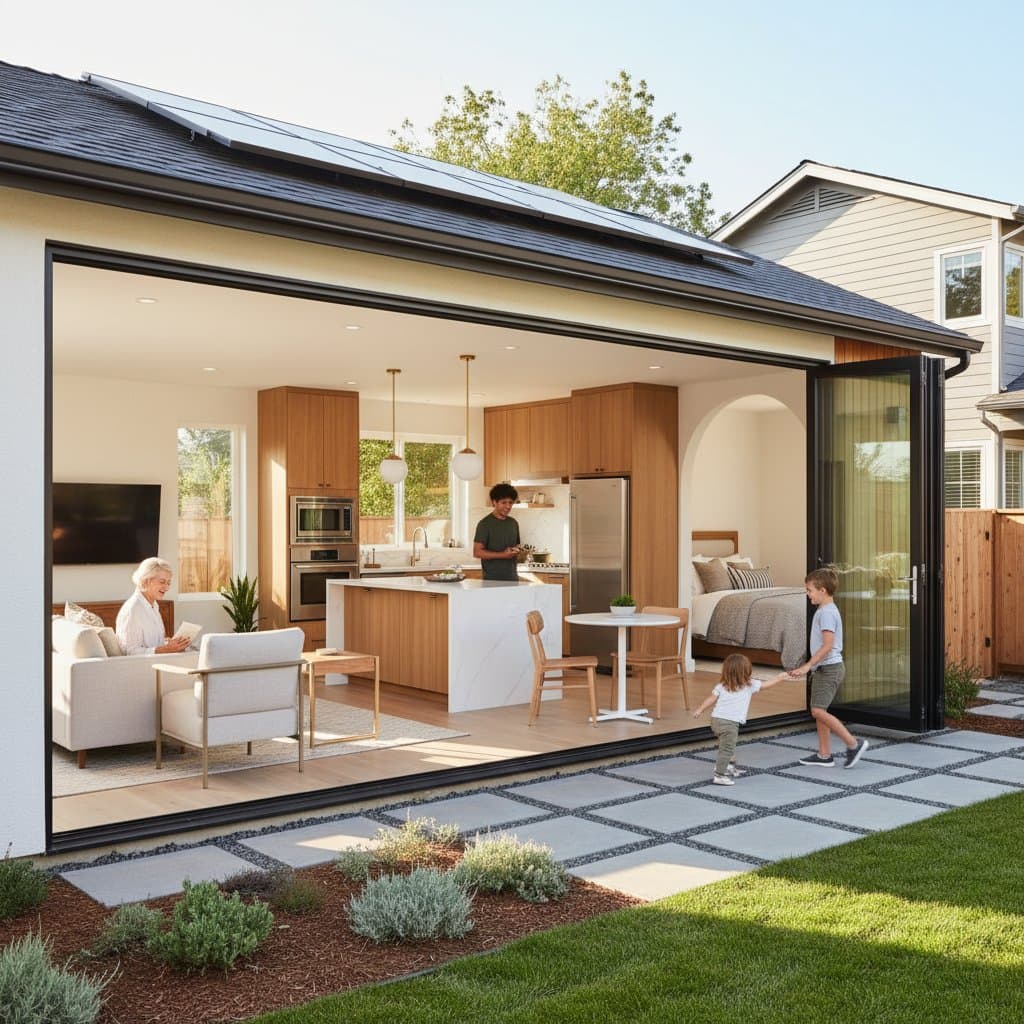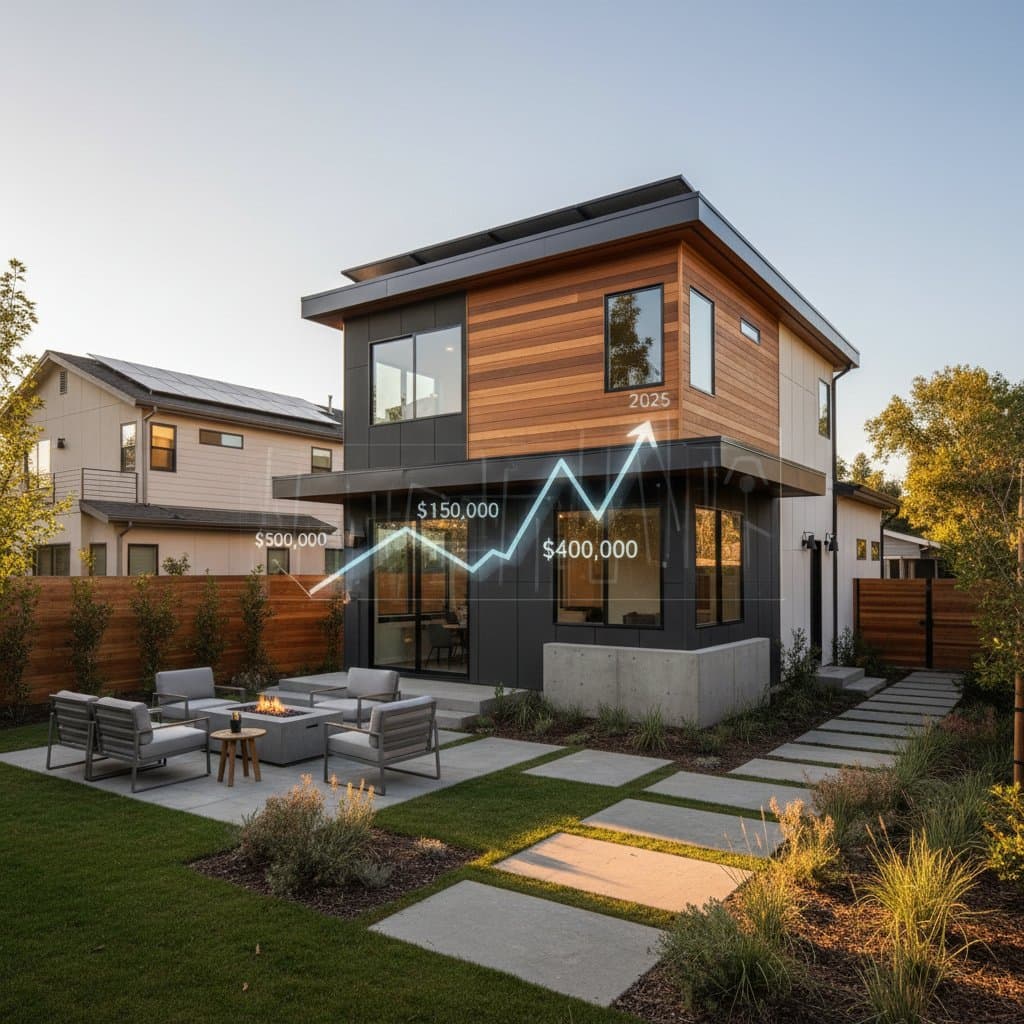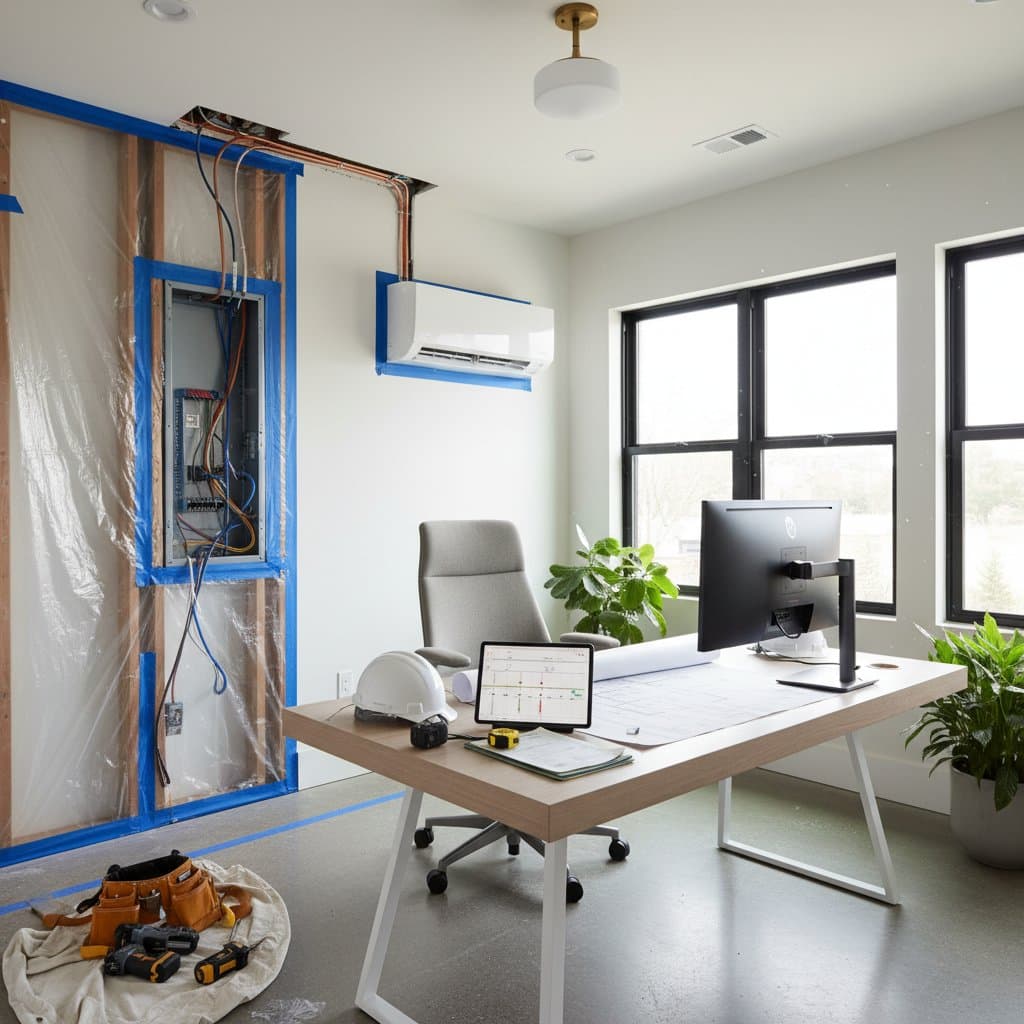Understanding Garage ADUs
Garage accessory dwelling units represent a practical way to repurpose underutilized space. These conversions transform attached or detached garages into independent living areas complete with kitchens, bathrooms, and bedrooms. Homeowners pursue such projects to house aging parents, adult children, or tenants, all while minimizing construction expenses compared to full additions.
The appeal lies in affordability and versatility. Typical costs range from $80,000 to $160,000, depending on location and features, yet the return on investment often exceeds 70 percent through added property value. In 2025, rising housing demands make garage ADUs a strategic choice for multigenerational living and income generation.
Weighing DIY Efforts Against Professional Expertise
Certain aspects of a garage ADU project suit DIY approaches for those with basic skills. Planning the layout involves sketching room arrangements and measuring dimensions to optimize space. Tasks like painting walls, installing flooring, and performing light carpentry, such as fitting shelves, allow homeowners to save on labor while personalizing the space.
Installing prehung doors or adding trim also falls into manageable DIY territory. These steps require standard tools and attention to detail but pose minimal risk to structural integrity. Homeowners should prioritize safety gear and follow manufacturer guidelines to achieve professional results.
Professional involvement becomes essential for complex elements. Running electrical wiring or plumbing lines demands expertise to prevent hazards like shorts or leaks. Upgrading the main electrical service panel requires knowledge of load calculations and safety standards.
Structural modifications, including adding support beams or raising the roof, necessitate engineering input to ensure stability. Compliance with fire safety and egress requirements further underscores the need for licensed contractors. Professionals differ by guaranteeing code adherence through precise framing, superior insulation, and integrated utilities.
They manage coordination with inspectors and streamline permit applications, which prevents issues like stop-work orders or fines. Engaging a pro from the outset avoids rework and accelerates project timelines, providing peace of mind for long-term habitability.
Exploring Alternative ADU Options
Basement conversions offer a viable alternative for homes with suitable foundations. Ideal for properties featuring dry conditions and sufficient headroom, these units provide inherent privacy below ground level. Access to existing utilities simplifies plumbing and electrical work, though strategic lighting combats potential dimness.
Natural light sources, such as egress windows, combined with LED fixtures, create inviting atmospheres. Basements often integrate seamlessly with the main house, facilitating family interactions while maintaining separation.
Detached backyard cottages suit expansive lots where space allows full independence. These standalone structures deliver maximum privacy and can include private yards or patios. Construction costs rise due to requirements for new foundations, septic connections, and extended utilities.
Planning must account for zoning distances from property lines. Such cottages appeal to those seeking rental opportunities with clear boundaries, though they demand greater upfront investment.
Attic transformations work well in homes with robust rooflines capable of supporting additional loads. This option preserves outdoor areas but requires meticulous attention to insulation and noise reduction. Staircase access and ventilation systems ensure comfort without compromising the upper level's integrity.
Engineers assess weight distribution to avoid sagging. Attic ADUs maximize vertical space in urban settings, offering compact yet efficient living quarters.
Step-by-Step Checklist for Launching Your Project
Begin by inspecting the garage structure for issues like cracks or water damage, and measure ceiling height to confirm feasibility. Verify local zoning laws, including setback requirements and ADU allowances, through consultations with planning departments.
Engage a designer experienced in ADU layouts to draft detailed plans incorporating plumbing placements, insulation layers, and room flows. Submit these plans alongside applications for building permits and utility approvals to initiate official processes.
Establish a realistic budget between $80,000 and $160,000, factoring in materials, labor, and contingencies. Arrange temporary storage solutions for vehicles and tools displaced during construction to maintain household functionality.
Select licensed specialists for critical trades: plumbers for pipe installations, electricians for circuit setups, and HVAC technicians for climate control systems. Schedule progressive inspections at key stages, such as framing and rough-ins, and retain all documentation for records.
Finalize the space with appropriate furnishings tailored to intended use, whether for family or guests. This methodical approach ensures a smooth transition to occupancy.
Prioritizing Environmental Sustainability
Garage conversions promote resource efficiency by reusing existing structures, thereby reducing the demand for virgin materials and minimizing landfill contributions. High-performance insulation in walls, floors, and ceilings aligns with or surpasses current energy codes, lowering utility bills over time.
Opt for LED lighting throughout to cut electricity use, pair it with low-flow faucets and toilets in bathrooms, and select Energy Star-rated appliances for the kitchen. These choices enhance overall efficiency without sacrificing convenience.
Manage waste responsibly during demolition. Transport old drywall, paints, and insulation to certified recycling or disposal sites to comply with environmental regulations. For garages built before 1980, test for asbestos in siding or lead in paint, and employ abatement professionals if hazards exist.
Incorporate ventilation strategies to prevent mold and improve air quality. Install bathroom exhaust fans that vent outdoors and kitchen range hoods with ducted exhaust. These features maintain a healthy indoor environment suited for daily living.
Navigating Building Codes and Inspections
Most jurisdictions mandate a minimum ceiling height of seven feet in habitable areas to ensure comfort and accessibility. Sleeping rooms require at least one egress window or exterior door measuring at least 5.7 square feet for emergency exits.
Fire-rated drywall, typically Type X with a one-hour rating, separates the ADU from the garage and main residence to contain potential fires. Interconnected smoke and carbon monoxide detectors throughout the unit provide early warnings linked to the primary home's system.
Kitchen and bathroom outlets need ground-fault circuit interrupter protection to safeguard against shocks. Plumbing systems must include vents rising above the roofline to facilitate proper drainage and prevent sewer gases from entering the space.
Request a rough-in inspection after installing framing, wiring, and pipes but before enclosing walls. Document the process with photographs of key installations, which proves compliance during final walkthroughs or future sales.
Realizing Enduring Advantages
Garage ADUs adapt to evolving family needs across years. Initially designed for elderly relatives, the space might later generate rental income during empty-nest phases or function as a dedicated home office amid remote work trends.
This adaptability elevates property appeal in competitive markets, often increasing resale values by 20 to 30 percent. Buyers appreciate the built-in flexibility for their own multigenerational or investment plans.
Beyond finances, these units offer emotional and practical support. They enable adult children to return temporarily without disrupting routines or provide on-site care for seniors, fostering stronger family bonds. The result is a resilient home that aligns with life's unpredictable shifts.
Executing Your Vision Successfully
Initiate the journey with a thorough structural assessment and zoning verification to build a firm foundation. Develop comprehensive designs and financial projections prior to any demolition, allowing adjustments for unforeseen challenges.
Upon completion, the ADU extends beyond mere square footage. It creates a versatile asset that sustains family connections, unlocks revenue streams, and fortifies your property's future resilience. Regular maintenance and adherence to codes ensure this investment endures for generations.



